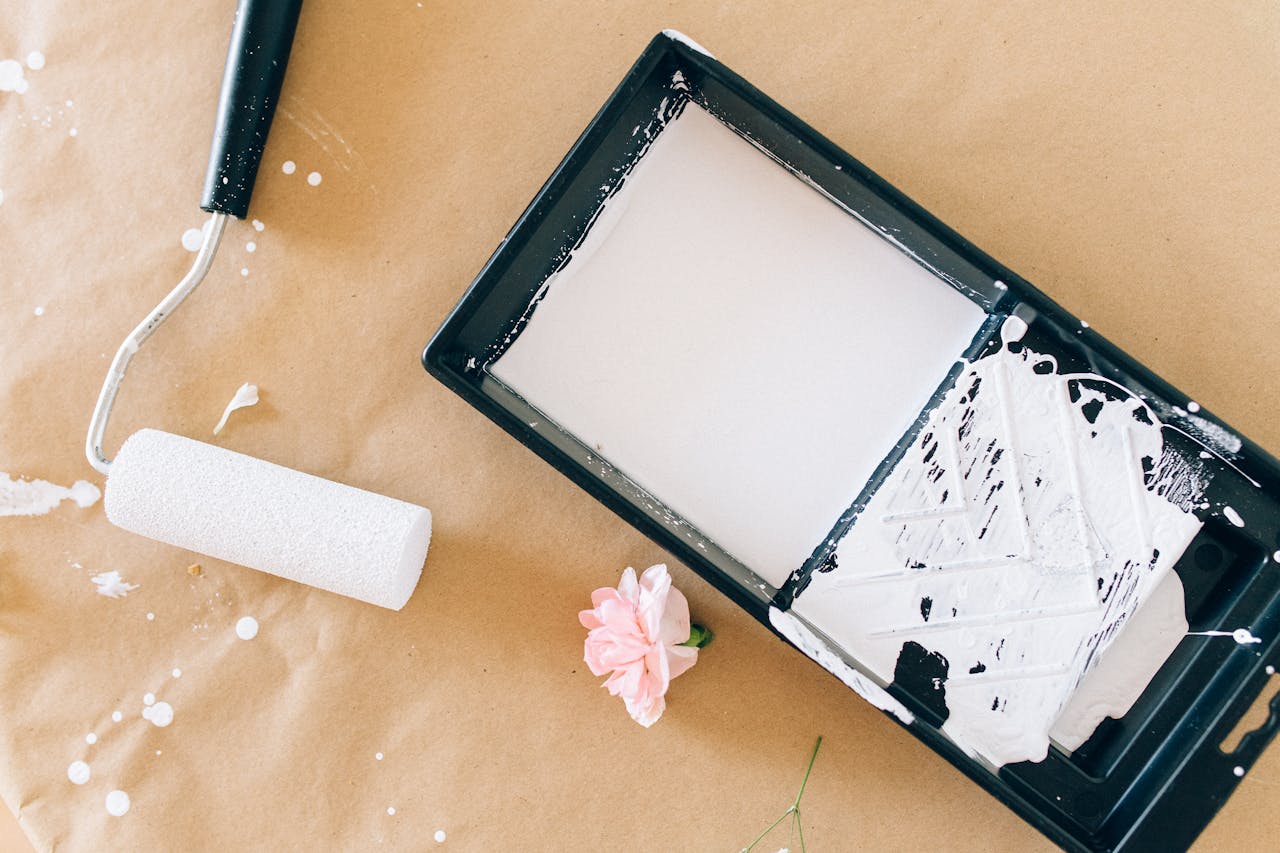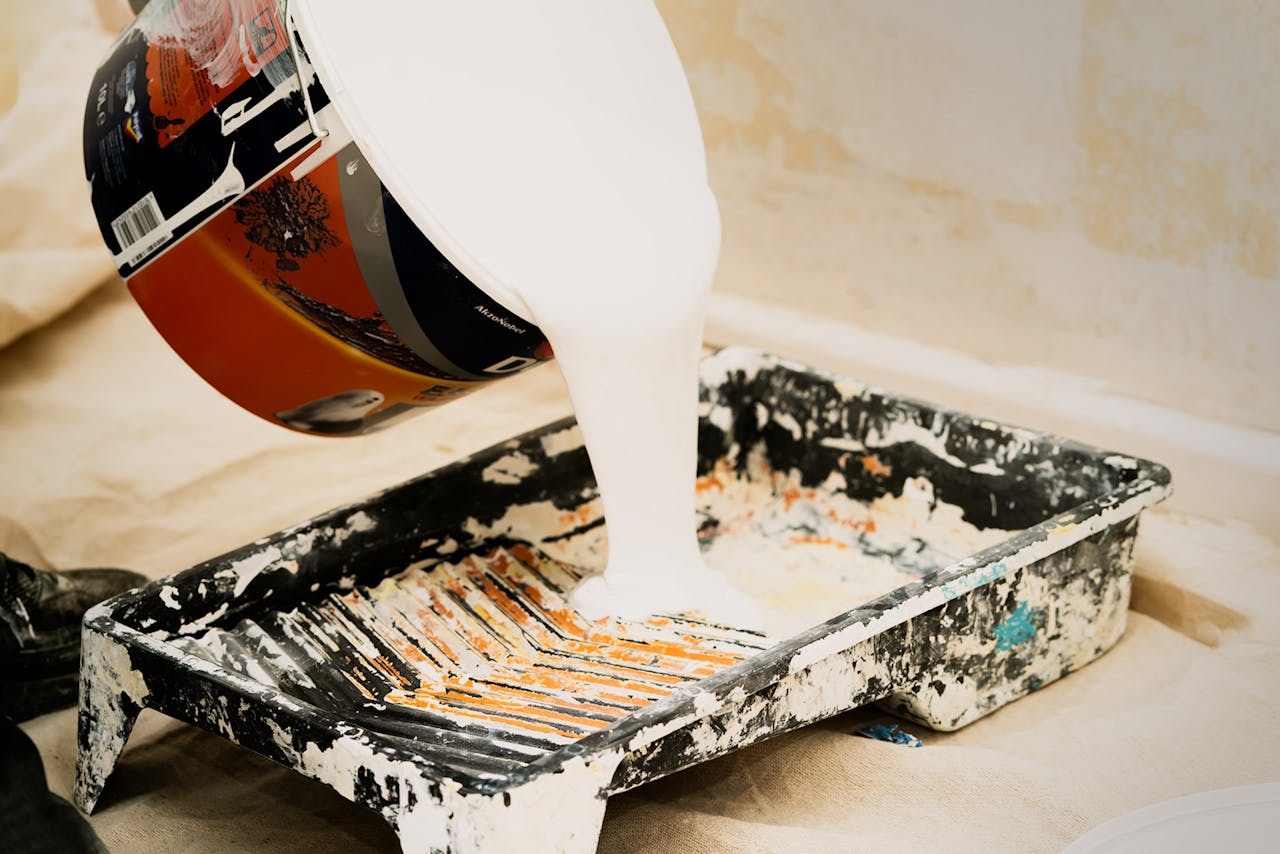The decision to use a primer is a crucial step in the house painting process, but it’s often surrounded by questions: Is it always necessary? Can it sometimes be skipped? This article delves into the role of primer in painting projects, examining when it’s essential and when you might be able to do without it.
Understanding the benefits and limitations of priming can save homeowners time and money while ensuring that the paint job lasts as long as possible. Whether you’re a seasoned DIY enthusiast or hiring professionals, knowing more about the function of primer will help guide your next painting project to success.
What is a Primer?
A primer is essentially the first coat applied to a surface before painting. It is designed to create a stable and adherent base for paint layers, ensuring a consistent texture and enhancing the overall quality of the finish. Primers are formulated differently based on their intended use, which can vary from improving adhesion to offering special protection against environmental factors.
In terms of composition, primers may be oil-based, latex-based, or shellac-based. Oil-based primers are valued for their durability and their ability to seal porous surfaces, making them ideal for wood and metal. Latex-based primers, on the other hand, are quicker to dry and easier to clean up, and they are suitable for drywall and softwoods. Shellac-based primers offer the best stain-blocking properties and are often used in restoration work where smoke or water damage is present.
The physical properties of primers also differ. Some are designed to fill small pores and create a smooth surface, while others feature added flexibility to prevent cracking. Additionally, certain primers are formulated to resist moisture, mold, and mildew, making them excellent choices for bathrooms and kitchens.
The Benefits of Using a Primer
Using a primer before applying paint is a step often overlooked by novices but prized by professional painters for the array of benefits it brings to any painting project. Here are some of the key advantages of incorporating a primer into your painting routine:
- Improved Adhesion: Primer provides a grippy, cohesive surface for the paint, which enhances adhesion and reduces the likelihood of peeling or flaking paint over time.
- Enhanced Durability: A primed surface holds up better against wear and tear, ensuring that the paint job looks fresher for longer and withstands environmental stresses more effectively.
- Uniform Appearance: Primers help to standardize the surface texture and color, masking any underlying stains or discolorations. This results in a more consistent and uniform paint finish across the entire surface.
- Increased Coverage: By sealing porous surfaces, a primer reduces the amount of paint absorbed by the wall. This can lead to significant savings as fewer coats of paint are needed to achieve full coverage.
- Stain Blocking: Certain primers are specifically designed to prevent stains and previous colors from bleeding through the new paint layer, which is crucial for achieving true color accuracy and a pristine finish.
- Moisture Barrier: Some primer formulas offer a moisture-resistant barrier, making them ideal for use in damp environments like kitchens and bathrooms to prevent mold and mildew growth.
Is a Primer Needed for Every House Painting Project?
The question of whether a primer is necessary for every house painting project often arises among homeowners and DIY enthusiasts. While priming is a critical step for many painting tasks, there are specific conditions under which it can be crucial or, conversely, skipped.
- New Drywall: New drywall absorbs paint at a high rate. A primer seals the surface, providing a uniform base that enhances the appearance and longevity of the paint.
- Color Changes: When making a drastic color change, especially from dark to light, priming is essential to ensure the new paint covers thoroughly, and the old color does not bleed through.
- Glossy Surfaces: Paint tends to not adhere well to glossy surfaces. A primer can make such surfaces more receptive to new paint, ensuring better adhesion and durability.
- Stained or Damaged Walls: In cases where walls have water stains or other types of discoloration, a primer will block these stains from showing through the final paint job.
- Bare Wood: Wood, particularly if it’s untreated, can absorb paint unevenly. A primer helps to smooth out absorption and can also protect against tannins that might seep through the paint.
However, there are scenarios where priming may not be necessary:
- Repainting the Same Color: If you’re applying the same type of paint in the same color over a surface that is in good condition, you might be able to skip priming, especially if the previous layer was also primed or is still in good shape.
- High-Quality Paint: Some high-quality paints include primer within their formulation, which can suffice for surfaces that have been previously painted and are in good condition.
In summary, while a primer is not required for every single painting project, assessing the surface condition, the type of paint being used, and the desired outcome can help you decide when it’s appropriate to use a primer. Skipping this step might save time initially but could lead to a less satisfactory finish or the need for more frequent touch-ups.
Tips for Hiring the Best Painters for Your Painting Project
When embarking on a painting project, choosing the right painters is as important as selecting the perfect shade of paint. The success of your project hinges not only on the color but also on the quality of the application, including essential steps like priming. Here are some practical tips to help you hire the best painters for your needs:
- Verify Credentials: Ensure that the painters you consider are licensed and insured. This protects you against liability and ensures they meet industry standards.
- Check References and Reviews: Ask for references and read online reviews. Hearing from previous clients can provide insight into the painters’ workmanship and professionalism.
- Evaluate Their Knowledge of Materials: Discuss what types of paints and primers they use. Knowledgeable painters should be able to recommend the best materials for your specific project, including which primers are best for the surfaces in your home.
- Get Detailed Estimates: Obtain written estimates from multiple painters. These should detail the scope of work, the types of materials used, and the total cost. Clear estimates prevent misunderstandings and help compare different contractors more effectively.
- Ask About Their Process: Understanding how the painters prepare the surface, including their priming technique, can be indicative of their attention to detail and dedication to quality. Proper surface preparation is crucial for a durable finish.
- Look for a Satisfaction Guarantee: Painters who provide a guarantee on their work are generally more reliable and committed to quality outcomes. This shows they stand behind their work and are confident in their skills.
- Assess Communication Skills: Good communication is key to any successful home improvement project. Ensure the painters are easy to communicate with, responsive, and willing to address your concerns.
Selecting the right painters ensures not only a beautiful outcome but also a smooth, professional process from start to finish. By following these tips, you can find skilled professionals who will do justice to your vision and ensure the longevity of your paint job.
Conclusion
Deciding whether to use a primer before painting your house is not always straightforward. The necessity hinges on specific factors like the condition of the walls, the type of paint being used, and the desired outcome. While skipping primer might save time and money in the short term, applying it can enhance the durability and appearance of your paint job, making it a worthwhile investment for many projects.
Ultimately, the choice to use a primer should be based on the particular needs of your painting project and the professional advice of experienced painters. For expert guidance on whether your next painting project requires a primer, you can trust Custom Painting, Inc. Reach out to us at (925)-294-8062 or fill up our Contact Form for professional advice and services.



